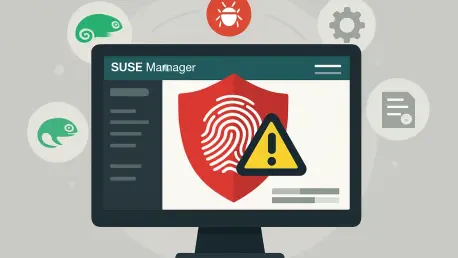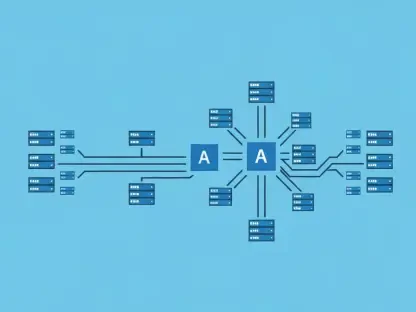In a startling revelation that has sent shockwaves through the enterprise IT community, a critical security vulnerability in SUSE Manager, identified as CVE-2025-46811, has emerged as a major threat to system integrity, posing an unprecedented risk to organizations relying on this widely used management tool for their infrastructure. This flaw, which allows unauthenticated attackers to execute commands with root privileges, cannot be overstated in its severity, with a CVSS 4.0 score of 9.3 and a CVSS 3.1 score of 9.8, opening the door to potential data breaches, system damage, and network-wide compromises. The vulnerability affects a broad spectrum of deployments, from containerized environments to cloud platforms, making it a pervasive concern for businesses of all sizes. As cyber threats continue to evolve, this discovery underscores the urgent need for robust security measures and immediate action to protect critical systems from exploitation by malicious actors seeking to capitalize on such weaknesses.
Unpacking the Vulnerability’s Technical Details
The root of this severe security issue lies in a design flaw categorized as a Missing Authentication for Critical Function weakness, known as CWE-306, within SUSE Manager. Specifically, the vulnerability targets the WebSocket endpoint at /rhn/websocket/minion/remote-commands, which fails to enforce proper authentication protocols. This oversight enables attackers with network access to bypass security checks entirely, executing arbitrary commands with root-level privileges without any user interaction or prior access rights. The low complexity of the attack, combined with its network-accessible nature, amplifies the danger, as automated scripts can easily exploit this flaw across exposed systems. Such a critical lapse in security design not only jeopardizes individual servers but also threatens entire enterprise environments, where a single breach could cascade into widespread damage. The implications are clear: organizations must recognize the technical underpinnings of this flaw to grasp the full scope of the risk it presents to their operations.
Beyond the technical specifics, the impact of this vulnerability extends to the very core of system trust and reliability. Rated with near-maximum severity scores, the flaw allows attackers to gain the highest level of access, potentially leading to unauthorized data access, system manipulation, or even the deployment of malicious payloads for further exploitation. What makes this particularly alarming is the absence of any prerequisite for user privileges, meaning that even the most basic network access can be leveraged into a catastrophic breach. Affected deployments span a variety of platforms, including container images, cloud-based systems on major providers, and server modules integral to enterprise setups. This broad applicability heightens the urgency for IT teams to assess their exposure and understand that the simplicity of exploiting this endpoint could attract a wide range of threat actors, from individual hackers to organized cybercrime groups looking for easy targets.
Scope and Affected Systems
Delving into the scope of this vulnerability reveals a troubling reality for organizations using SUSE Manager across diverse environments. The flaw impacts numerous versions and configurations, including containerized setups like specific server images, as well as cloud-based deployments on platforms such as Azure, EC2, and GCE. Additionally, various server modules critical to enterprise management are also at risk, leaving no segment of SUSE Manager users untouched by this threat. The extensive reach of affected systems means that businesses ranging from small firms to large corporations could face severe consequences if their infrastructure remains unpatched. This widespread exposure highlights the importance of thorough system audits to identify vulnerable components, as overlooking even a single instance could provide an entry point for attackers to compromise entire networks with devastating results.
Equally concerning is the potential for this vulnerability to be exploited in environments where SUSE Manager plays a central role in system administration and monitoring. Organizations relying on these tools for managing updates, configurations, and security policies may find their most critical operations undermined by a flaw that grants attackers unfettered root access. The diversity of affected builds further complicates the situation, as IT departments must navigate a complex landscape of version numbers and deployment types to ensure comprehensive protection. This scenario serves as a stark reminder of the interconnected nature of modern IT ecosystems, where a single point of failure can have far-reaching implications. Businesses must prioritize identifying all instances of SUSE Manager in use, as the risk of compromise remains high until every affected system is secured against this critical threat.
Mitigation Strategies and Urgent Actions
Addressing this critical vulnerability demands swift and decisive action from system administrators and security teams tasked with safeguarding enterprise environments. The consensus among experts is unequivocal: immediate patching is essential to close the security gap posed by CVE-2025-46811. Organizations should prioritize applying the latest updates provided by SUSE, ensuring that all deployments are brought up to secure versions without delay. Beyond patching, interim measures such as network segmentation and stringent access controls can help limit exposure of the vulnerable WebSocket endpoint while remediation efforts are underway. Monitoring network traffic for unusual activity also becomes paramount, as early detection of potential exploits can mitigate damage before it escalates into a full-blown crisis.
Looking back at the response to this vulnerability, it was evident that a multi-layered approach proved necessary to tackle the severity of the threat. In addition to deploying patches, many organizations revisited their security policies to strengthen defenses against similar flaws in the future. Conducting thorough audits of SUSE Manager deployments was a critical step taken to verify compliance with updated versions and to identify any overlooked systems. As a forward-looking measure, enhancing training for IT staff on recognizing and responding to such vulnerabilities emerged as a key takeaway. The incident served as a powerful lesson in the importance of proactive security practices, urging businesses to maintain vigilance and invest in continuous monitoring solutions to protect against evolving cyber threats that could exploit even the smallest oversight in system design.









